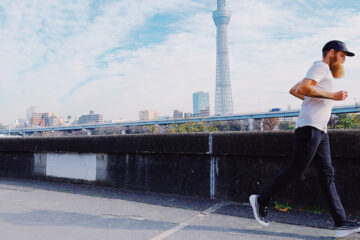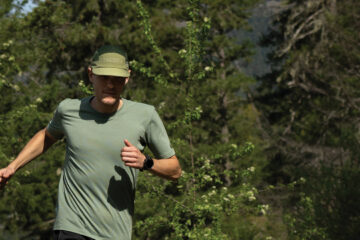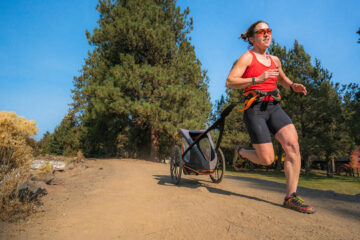words: north bennett & jon glaser
images: jon glaser
Four days a week, the Brooklyn-based actor, comedian, and ciele FRND Jon Glaser laces up his trail shoes and jogs into Brooklyn’s last and only forest. There, he disappears into the quiet, looping along singletrack trails and padding beneath oak, maple, and tulip trees. Sassafras and dogwood swish to his sides, and each turn holds the promise of something new: a stream, a steep hill, a little waterfall, maybe even a mountain bike jump.
“It’s my salvation right now, for sure,” Glaser told me recently, over video chat. ” Getting outside is just so necessary right now for all of us, and for me to get outside for an hour at a time, even if I’m not going very far…is just the best.”
Glaser lives in an apartment with his wife and two kids, only a few minutes’ walk from Prospect Park. The abode is spacious enough, he says, but the last few months have certainly felt cramped. The pandemic has meant more time at home for everyone in the family, and this summer’s sweltering heat has only made the city feel closer. Through all of this, the trails have offered Glaser a sense of escape, and it’s easy to understand why.
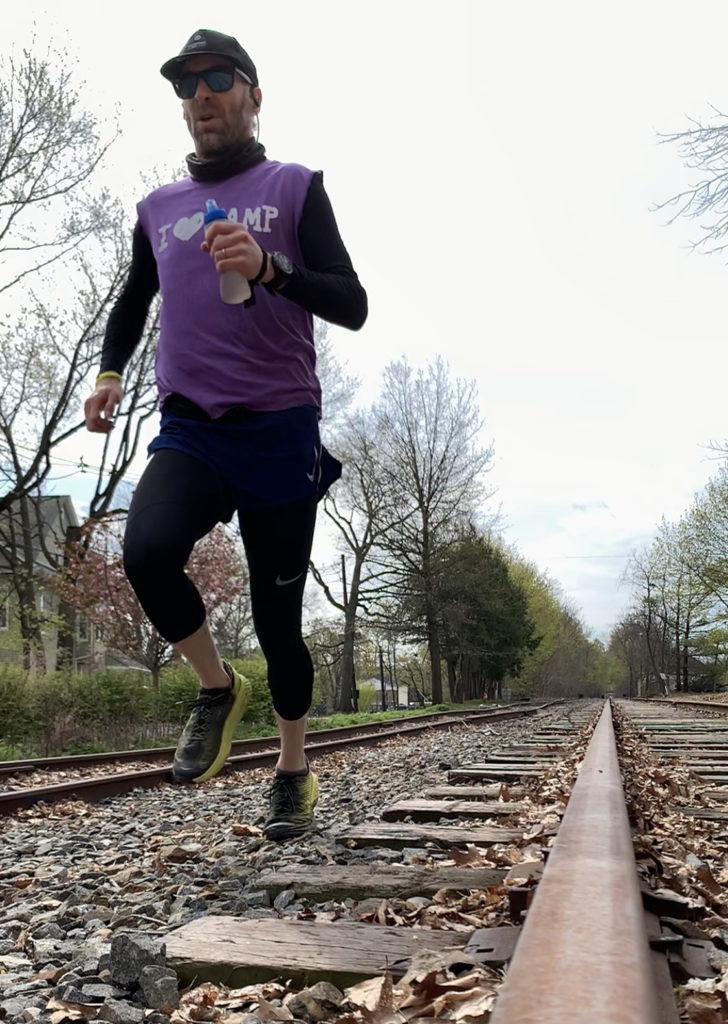
Imagine: in a city of nearly 8.4 million people, in the United States’ most densely populated metropolitan area, a forest that welcomes you with quiet, shade, and solitude. From Brooklyn’s blazing sidewalks, you might run away from the clamor of a city cranking at full speed and into the peace of swishing branches and trickling creeks. In the newfound calm, you might ease up to take a deep breath, or you might push harder to gasp at air renewed by moving water and oxygenating leaves. Maybe your pupils will dilate, opening to all that is dappled in light, or maybe your muscles will ease at the soil’s soft cushion. Strides may shorten here, but each one can still take you farther than the last.
“On the trails, there are just far fewer people,” Glaser said. “Most of the time, I’m by myself, and it’s awesome…I listen to music a lot but there are definitely times when I’ll turn it off and enjoy the quiet, the wind in the trees. There are a couple little creeks and teeny little waterfalls, but you still get the sound of it and it feels like you’re not in the city.”
It’s tempting to think of Glaser’s runs as an urbanist’s unlikely escape into nature, but to do so would be to forget the history of Prospect Park. Situated on native Lanape land and forested since the last ice age, most of the park was logged into pasture a couple hundred years after the arrival of white settlers, and it stayed that way for centuries. It was only in the 1860s, when Central Park designers Frederick Law Olmstead and Calvert Vaux began planning their new project in Brooklyn, that the space started to take its current shape. Inspired by the forests of the Adirondacks, the two oversaw the planting of innumerable trees. Workers excavated streams, drained swamps, and emphasized vistas. A meadow took shape, and then a forest, and then the workers got to digging a lake by hand. Satisfied, Olmstead and Vaux laced this new landscape with a network of paths, all of them curving and roundabout. Their goal? To create “the impression of unending space,” right in the heart of Brooklyn.
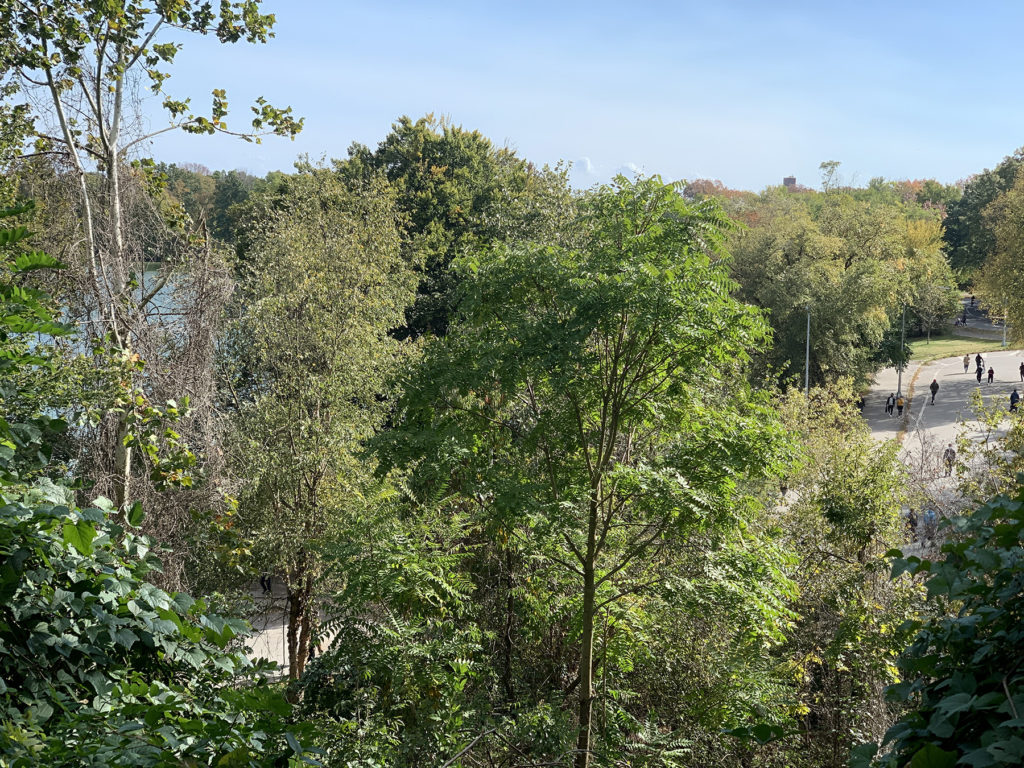
I sensed in talking to Glaser that it was this very sort of construction that kept him returning to Prospect Park so often. It must be such a relief, I thought, to experience other sorts of shapes, the bends of trails and trees. For contrast, I imagined him leaving his apartment for a road run. City routes have so many straight lines and view-crowding obstructions: skyscrapers, busy sidewalks, block after block of rectangles and squares.
I searched Strava for the most popular running segments in New York City, and this is exactly what I found: jagged loops and unwavering out-and-backs. A runner can flow straight along the East River, or circuit her way across the Brooklyn Bridge and back over the Manhattan. Efficient lines—the sort that Olmstead and Vaux so doggedly avoided in their plans for Prospect Park—glow thick and iridescent on the heat map. The shapes speak a preference for pavement and speed. And while the winding perimeter loops in both Central and Prospect Parks appear just as bright as any of the city’s most popular road runs, the trails that Jon prefers remain faint, pink and whimsical in the shadows nearby.
We might take this pattern as a symptom of the city’s character. New York is known as an ambitious pace setter. It hosts the world’s largest stock exchange and the United States’ busiest international travel hub. To many, it is a cultural leader, and its people rush to retain that status. “A New York minute” does not mean sixty seconds; it means right now, on the fly. The city’s efficient geometry helps everyone keep up.
The geographer Yi-Fu Tuan refers to these paths and the blocky buildings that line them as “carpentered space,” areas “replete with straight lines, angles, and rectangular objects.” They’re the sort of places planned on graph paper and built by framing squares. “Cities,” Tuan says, “are rectangular environments par excellence.” They are quick and clear, easy to map out and move through. When we think of urban running, we often think of this type of terrain.
Carpentered space influences the way that we perceive the world around us. A parallelogram is a rectangle receding. Converging lines connote distance. Vertical strokes convey height. The path is straight ahead, or a right angle turn to either side. Run along a street and these rules don’t really change, but head into the trails and you have a whole new game. The play of the path means that you get to read terrain differently. You get to change pace and meander. When it comes to urban trail running, Glaser seems to enjoy this diversity of engagement most.
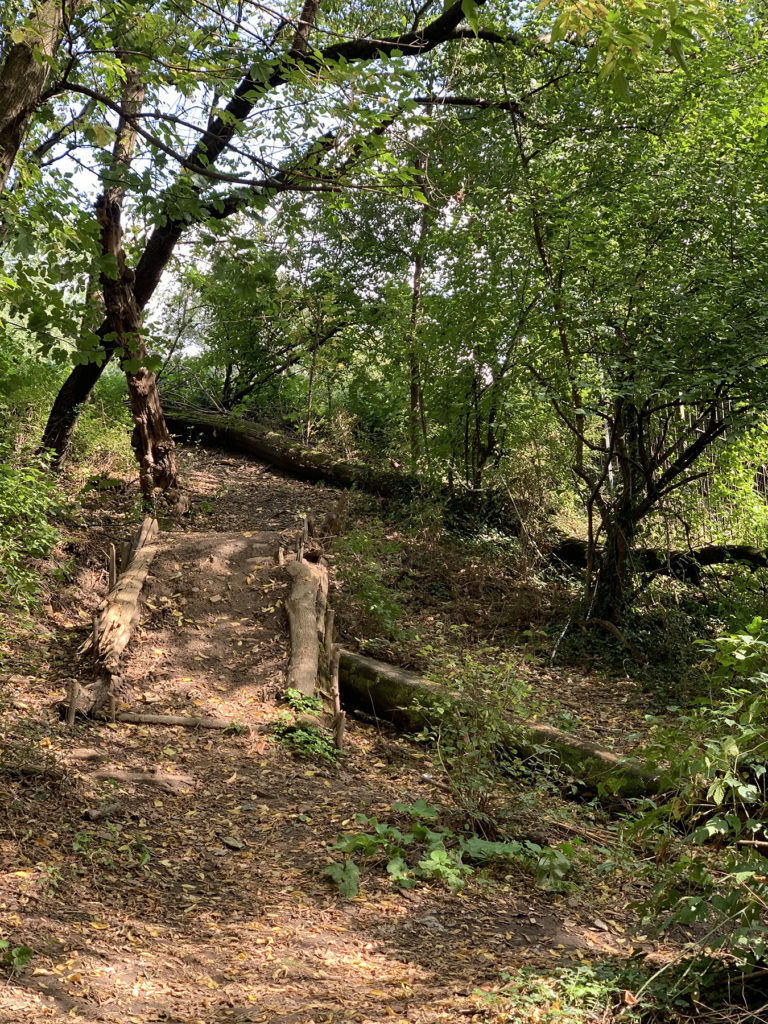
“There’s varied terrain: there’s single track, there’s wider gravel paths, there’s some sections that are really rocky, if you’re training for a race where that’s the terrain. There’s some steep sections that are short, but challenging. If you do them a few times you get a good workout…There are jumps and berms. You know it’s really small, but…if I go run in [Prospect Park] for ten minutes I can get some good elevation and some good climbing and it’s also just fun.”
For longer efforts, Glaser has to double up sections of trail to get more distance, but even a few hours of that fails to render the trails of Prospect Park boring. With a little ingenuity, Glaser said that he can rack up a couple thousand feet of vert, which is impressive, since the park’s highest feature, Lookout Hill, rounds off only 177 feet above sea level.
“I just find trail running…to be way more stimulating,” he said. “The changes in terrain, the changes in elevation, the changes in speed, the combination of running, walking, hiking, climbing, scrambling, stopping and enjoying the view—which you can obviously find on a road run—but I don’t find it nearly as satisfying as a good trail run.”
Glaser has been living in New York City for most of the last twenty-five years, and running half marathons since 2014, but only in the last three years has he started venturing into its woods. I asked him whether or not he was surprised to find such varied terrain so close to home. He was.
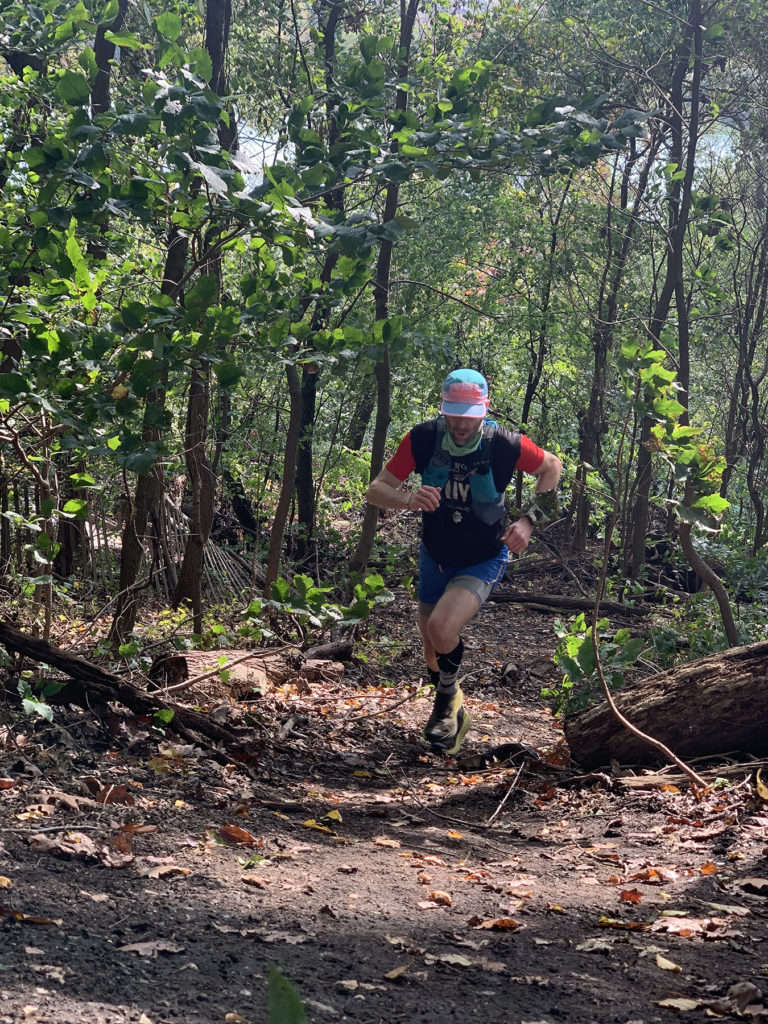
“You know it’s there, but it wasn’t until I really started running that I really took full advantage of the trails,” he said. Now, he wishes that he’d found them earlier, and can only imagine how much fun his old dog—a forty-five pound Pit mix—would’ve had romping through the forest.
“She was so strong and fast. I wish I had tried it with her, because she would’ve been loving it,” he said. In his imagining, I sensed that he thought the same for himself.
Glaser’s outings in Prospect Park have him wondering what other paths might traverse the city. In the coming months, he plans to do a trail run in each of New York’s four other boroughs: Manhattan, Queens, The Bronx, and Staten Island. Some of the trails will be familiar to him—he’s run in Queens before, and already knows that Central Park’s trails are inferior to those of its Brooklyn counterpart—but the others will be new. In a city as big as his, there remains plenty to discover.
“I’m mostly looking forward to experiencing some new trails, seeing what else is out there and available a short drive away, seeing if there’s any other unexpectedly good trail running in the city,” he said. “I’m sure it’d take a few runs to get the most out of a new trail, but that also depends on how extensive the trails are. Either way, it’ll be fun to spend some dedicated time exploring.”
Perhaps Glaser has already found New York’s best in his backyard, but there’s really no telling until the project’s through. His biggest pleasures will come from the miles of search and the opportunity to wander as the city continues its headlong push forward. In any case, when it comes to what he actually finds, Glaser seems hard to disappoint.
“Maybe the other trails will be boring or super short or just flat out suck or whatever,” he said. “I’ll find out soon enough!”



